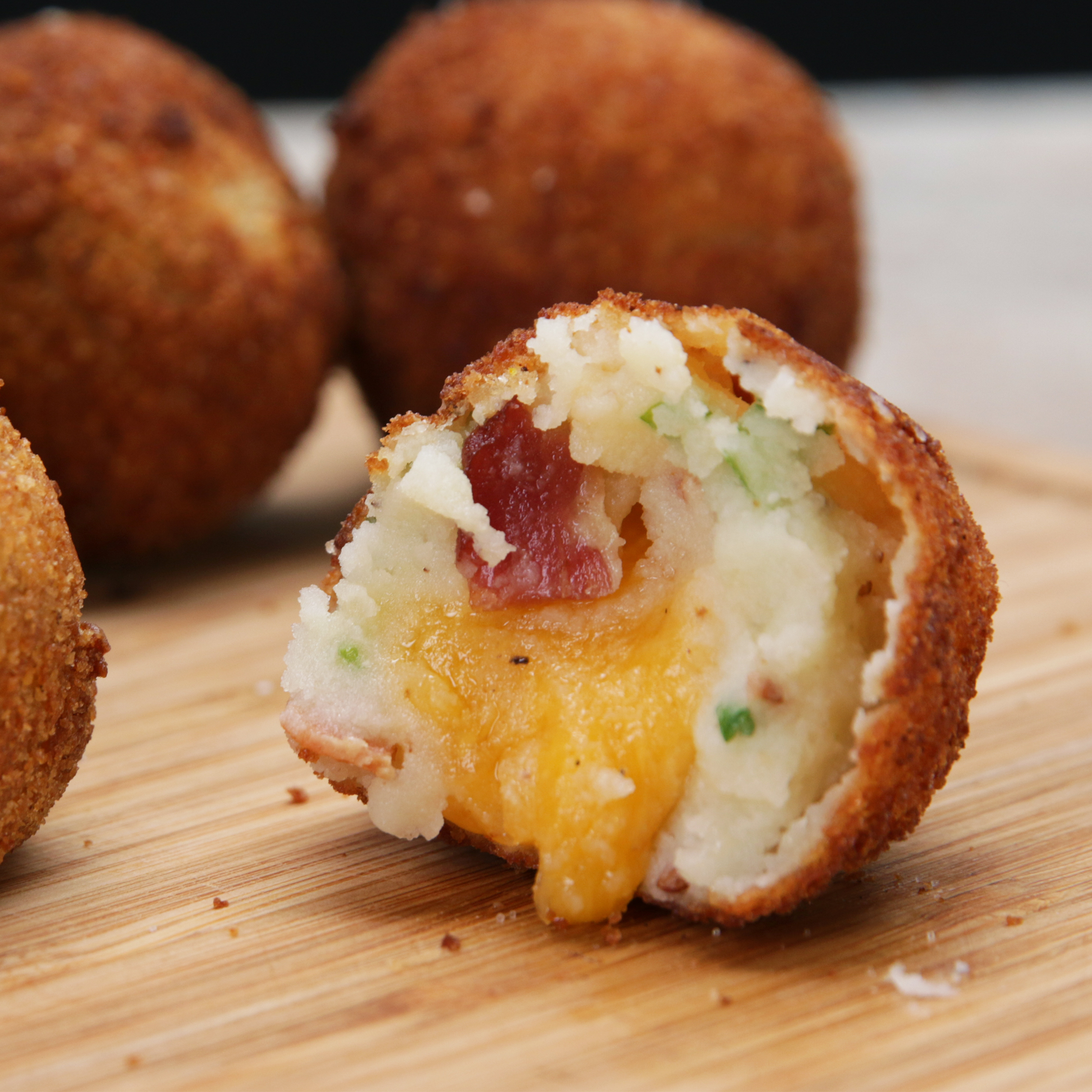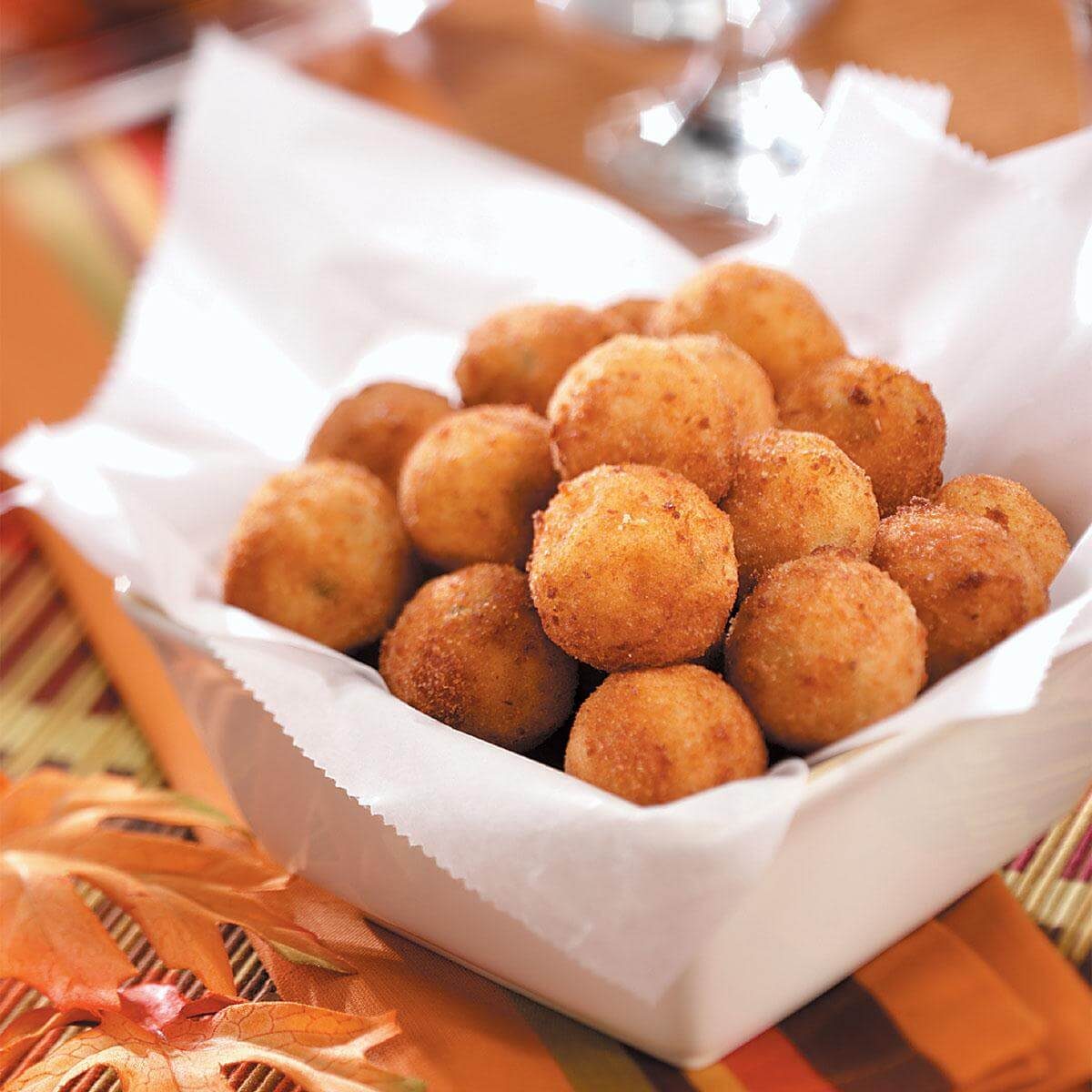Potato balls, also known as croquettes, are a delectable culinary creation that has captivated taste buds across cultures and cuisines. These savory morsels, crafted from mashed potatoes and seasoned with a myriad of flavors, offer a delightful balance of textures and flavors that make them a beloved appetizer, side dish, or main course.
From the humble beginnings of European kitchens to the vibrant street food stalls of Asia, potato balls have evolved into a global phenomenon, showcasing the versatility and adaptability of this simple yet irresistible dish. Join us on a culinary journey as we explore the intricacies of potato ball recipes, uncovering their cultural significance, health benefits, and endless variations.
Introduction
Potato balls, a culinary delight enjoyed worldwide, are delectable orbs of mashed potatoes, seasoned and shaped into balls, then coated and fried to golden perfection. These crispy on the outside, fluffy on the inside treats are a testament to the versatility of the humble potato.
Potato balls, known by various names across different cuisines, have a rich culinary history. In Germany, they are called “Kartoffelknödel” and are often served as a hearty accompaniment to meat dishes. In Poland, “Kluski Śląskie” are a beloved comfort food, typically filled with meat or cheese.
In India, “Aloo Tikki” is a popular street food, often topped with tangy chutneys and served as a snack or appetizer.
Ingredients and Materials
To craft delectable potato balls, an array of ingredients and essential tools are required. Understanding the precise quantities and types of components, as well as the necessary equipment, is crucial for ensuring a successful culinary endeavor.
The following sections provide a comprehensive list of ingredients and materials, meticulously detailed to guide you through the preparation process with ease and precision.
Ingredients
- Potatoes: 2 pounds (approximately 900 grams) of russet potatoes, peeled and quartered
- Butter: 1/4 cup (56 grams), unsalted
- Milk: 1/2 cup (120 milliliters), warmed
- Eggs: 2 large, beaten
- Flour: 1 cup (120 grams), all-purpose
- Breadcrumbs: 1 cup (100 grams), panko or regular
- Salt: 1 teaspoon
- Black pepper: 1/2 teaspoon
- Vegetable oil: For frying
Essential Tools and Equipment
- Large pot or Dutch oven: For boiling potatoes
- Potato ricer or masher: For mashing potatoes
- Large bowl: For mixing ingredients
- Small bowl: For beating eggs
- Measuring cups and spoons: For precise measurements
- Frying pan or deep fryer: For frying potato balls
- Slotted spoon: For removing potato balls from oil
- Paper towels: For draining excess oil
Step-by-Step s

Crafting these delectable potato balls requires a meticulous approach, which we will unveil in this comprehensive guide. We will delve into each step with precision, ensuring that you can replicate this culinary masterpiece with ease.
Before embarking on this culinary journey, it is imperative to gather the necessary ingredients and materials. Once you have assembled these elements, let us commence the step-by-step process of creating these tantalizing potato balls.
Preparing the Potatoes
The foundation of our potato balls lies in perfectly cooked potatoes. Begin by thoroughly washing and peeling the potatoes. Cut them into even-sized chunks to ensure uniform cooking. Place the potato chunks in a pot of cold, salted water and bring it to a boil.
Reduce the heat and simmer until the potatoes are tender when pierced with a fork, approximately 15-20 minutes.
Mashing and Seasoning
Once the potatoes are cooked, drain them well and return them to the pot. Use a potato masher or fork to mash the potatoes until they are smooth and lump-free. Add the butter, milk, salt, and pepper to taste. Mix thoroughly until all ingredients are well combined and the potatoes have reached a creamy consistency.
Forming the Potato Balls
With the potato mixture prepared, it is time to shape our potato balls. Lightly flour your hands to prevent the mixture from sticking. Take a small portion of the potato mixture and roll it into a ball, about 1-inch in diameter.
Repeat this process until all of the potato mixture has been used.
Variations and Adaptations
The classic potato ball recipe is a versatile canvas for culinary creativity. Let’s explore how you can experiment with flavors and ingredients to create unique variations.
To adapt the recipe to dietary restrictions or preferences, consider the following:
Gluten-free Variations
- Replace regular flour with gluten-free flour blends like almond flour, coconut flour, or a combination of both.
- Use gluten-free breadcrumbs for the coating.
Vegan Variations
- Substitute eggs with a flaxseed or chia seed egg replacer.
- Use plant-based milk, such as almond milk or soy milk, instead of dairy milk.
- Consider adding nutritional yeast for a cheesy flavor.
Flavorful Adaptations
- Incorporate herbs and spices into the potato mixture, such as garlic powder, onion powder, or paprika.
- Add grated cheese or chopped vegetables, such as carrots or zucchini, for extra flavor and texture.
- Experiment with different fillings, such as sautéed mushrooms, spinach and ricotta, or shredded chicken.
Coatings and Dipping Sauces
- Use a combination of bread crumbs and grated Parmesan cheese for a crispy coating.
- Dip the potato balls in a mixture of breadcrumbs and crushed nuts for a crunchy texture.
- Serve the potato balls with a variety of dipping sauces, such as ranch dressing, marinara sauce, or garlic aioli.
Presentation and Serving
Potato balls are a versatile dish that can be presented and served in various ways to enhance their visual appeal and complement different dining occasions.
Traditionally, potato balls are often served as a street food or appetizer in many cultures. They are typically skewered or served in small bowls with a dipping sauce, such as ketchup, mayonnaise, or aioli.
Creative Presentation Ideas
- Arrange potato balls on a platter, alternating colors for a vibrant presentation.
- Serve potato balls in a cone-shaped holder or a mini wire basket for a playful and portable option.
- Create a miniature potato ball tree by skewering potato balls on toothpicks and inserting them into a small piece of foam or a floral arrangement.
Serving Suggestions
Potato balls can be served as an appetizer, a side dish, or even a main course, depending on the portion size and accompaniments.
- As an appetizer, serve potato balls with a dipping sauce and a side of fresh vegetables or salad.
- As a side dish, potato balls can accompany grilled meats, roasted vegetables, or pasta dishes.
- As a main course, potato balls can be served with a larger portion size, accompanied by a gravy or sauce, and a side of bread or rice.
Nutritional Value and Health Benefits
Potato balls are a delectable treat, but they also pack a nutritional punch. Let’s delve into their macronutrient composition, vitamin and mineral content, and explore the potential health benefits associated with their consumption.
Macronutrients
- Carbohydrates: Potato balls are primarily composed of carbohydrates, providing a source of energy.
- Protein: They offer a modest amount of protein, contributing to satiety and muscle maintenance.
- Fat: Potato balls contain some fat, primarily from the oil used in frying.
Vitamins and Minerals
- Vitamin C: Potatoes are a good source of vitamin C, an antioxidant that supports immune function.
- Potassium: Potato balls provide potassium, an essential mineral for maintaining fluid balance and blood pressure.
- Fiber: Potato balls contain dietary fiber, which aids digestion and promotes satiety.
Health Benefits
- Energy Source: The carbohydrates in potato balls provide a quick and convenient source of energy.
- Immune Support: The vitamin C content in potato balls helps boost the immune system.
- Digestive Health: The dietary fiber in potato balls supports a healthy digestive system.
Healthier Adaptations
While potato balls are a tasty indulgence, consider these tips to make them healthier:
- Bake or Air Fry: Opt for baking or air frying instead of deep-frying to reduce fat content.
- Use Whole-Wheat Flour: Swap out regular flour for whole-wheat flour to increase fiber intake.
- Add Vegetables: Incorporate grated carrots, bell peppers, or onions into the potato mixture for added nutrients.
Cultural Significance and History

Potato balls hold a significant place in various cultures worldwide, with their origins deeply rooted in history.
Origins and Evolution
The origins of potato balls can be traced back to the indigenous populations of the Andean region of South America, where potatoes have been a staple food for centuries. Potato balls, known locally as “papas rellenas” or “papas a la huancaína,” were likely developed as a way to preserve and utilize leftover mashed potatoes.
Over time, the dish spread throughout the region and beyond, evolving into diverse variations influenced by local culinary traditions.
Role in Traditional Festivals and Celebrations
Potato balls play a significant role in traditional festivals and celebrations in many cultures. In Peru, “papas rellenas” are a popular dish during the Independence Day celebrations in July, while in Bolivia, they are a staple of the “Alasitas” festival in January, which celebrates miniature offerings and wishes for the coming year.
In India, potato balls known as “aloo tikki” are often served during Diwali, the festival of lights.
Final Conclusion
As we conclude our exploration of potato ball recipes, it is evident that these culinary gems have transcended their humble origins to become a beloved dish enjoyed worldwide. Whether you prefer the classic mashed potato filling or experiment with innovative variations, potato balls offer a boundless canvas for creativity and culinary exploration.
So gather your ingredients, don your apron, and embark on a delightful journey into the world of potato balls, where every bite promises a symphony of flavors and textures.
Frequently Asked Questions
What are the essential ingredients for making potato balls?
The core ingredients for potato balls include mashed potatoes, flour, eggs, breadcrumbs, and seasonings. Additional ingredients may vary depending on the recipe and desired flavors.
Can potato balls be made ahead of time?
Yes, potato balls can be prepared in advance. After forming the balls, place them on a baking sheet lined with parchment paper and freeze for up to 2 months. When ready to cook, thaw the potato balls overnight in the refrigerator and then fry or bake according to the recipe.
What are some creative fillings for potato balls?
Potato balls offer endless possibilities for fillings. Consider incorporating shredded cheese, sautéed vegetables, minced meat, or a combination of your favorite ingredients to create unique and flavorful variations.
How can I make potato balls healthier?
To make potato balls healthier, opt for whole-wheat breadcrumbs instead of regular breadcrumbs, use low-fat or fat-free milk in the mashed potatoes, and bake or air-fry the potato balls instead of deep-frying them.
What are some traditional ways of serving potato balls?
Potato balls are traditionally served as an appetizer or side dish. They can be garnished with fresh herbs, grated Parmesan cheese, or aioli sauce. In some cultures, potato balls are served with a dipping sauce, such as ketchup, mustard, or ranch dressing.
